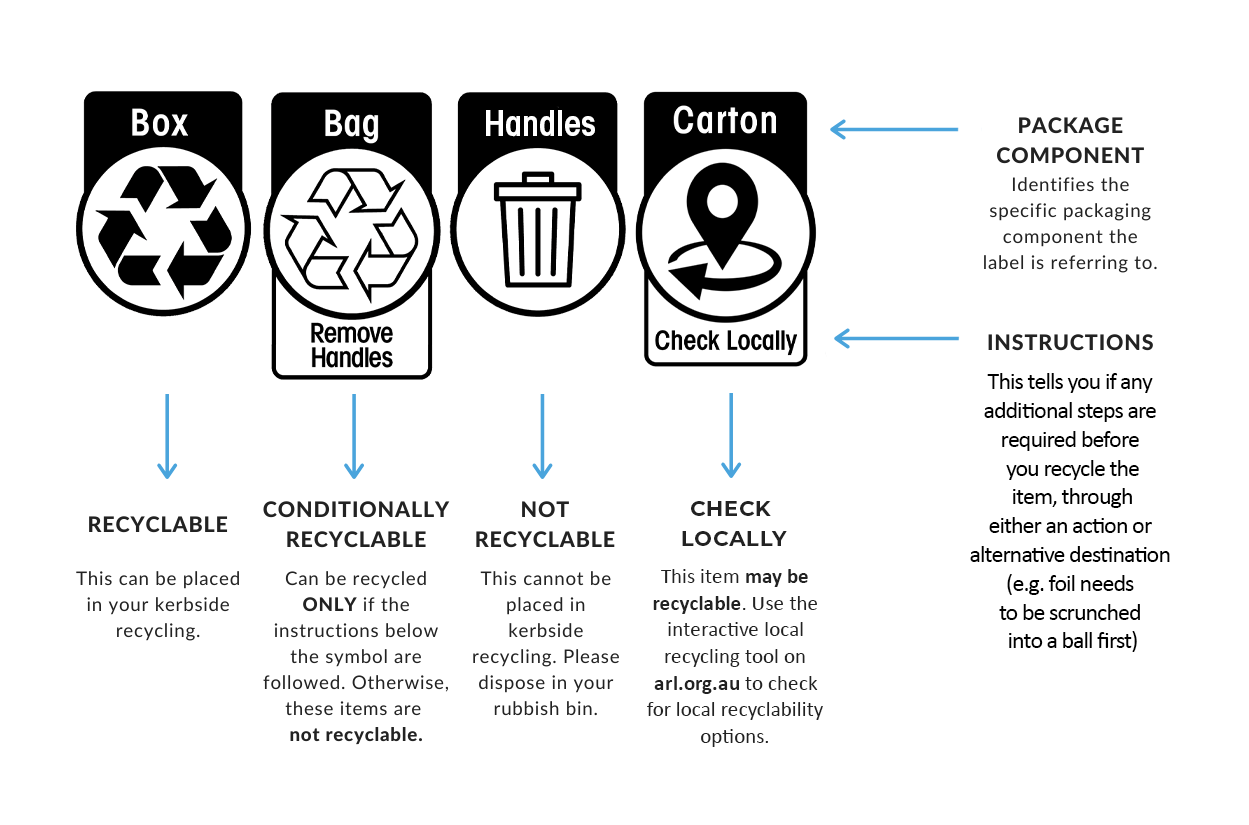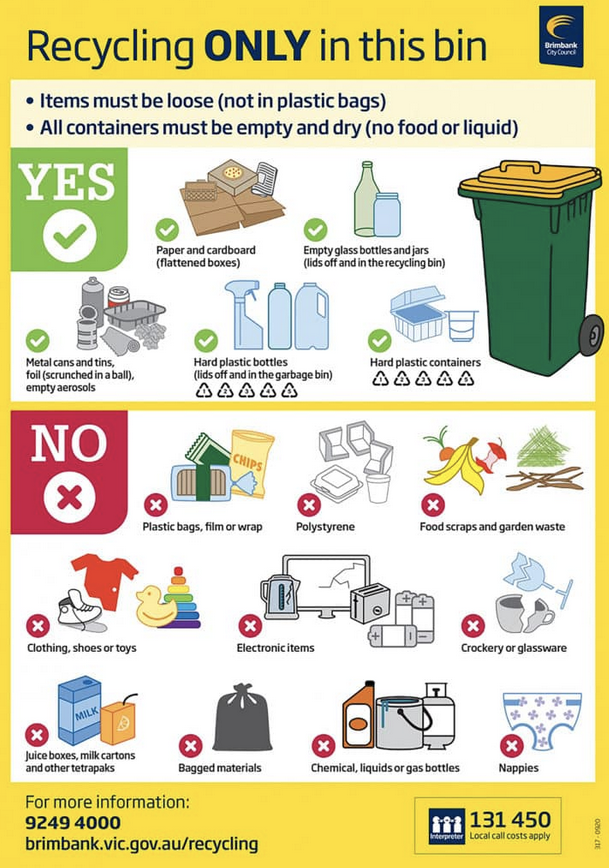The MRA cheat sheet to yellow bin recycling
By: Zoe Watkins, MRA Consulting Group
With climate change on the forefront of media and politics, the big question is what you can do to help.
Waste prevention and recycling are small but real ways to help mitigate climate change. It might sound simple, but it has an effect. (Of course nothing beats avoiding to create the waste in the first place).
The act of collecting a waste product e.g., plastic bottles, and recycling it to be turned into a new product, produces less greenhouse gas emissions than extracting and processing a raw or virgin material into a product.
Recycling also stops recyclable waste such as organics, paper and cardboard from ending up in landfill, only to produce carbon dioxide and methane.
Recycling through the yellow kerbside bin can be a tricky thing, especially with the inconsistencies across council areas and acceptable materials.
Below are some tips from MRA to make recycling easier.
1. Follow Council’s Instructions
Read the Sticker on your Bin, check the website or call your local Council for clarification.
With the inconsistencies across council areas, the sticker on your bin is the easiest way to know what is acceptable in your area.
2. Keep recyclables loose
Containers, paper etc should be loose in the recycling bin. Do not dispose fill a box, bag, plastic or otherwise, and then put in the bin.
3. Remove all food/liquids from containers
Recycling clean material is important.
Make sure the recyclable materials such as food containers are empty of foods and are dry (e.g. pizza boxes), and items such as aerosols and laundry containers are empty of liquids and dry
Clean aluminium foil can also be recycled, make sure it is scrunched up into the size of a tennis ball.
4. Look at the labels for instructions

The Australasian Recycling Label shown here, is often printed on the packaging and contains the correct recycling instructions.
5. Don’t wish-cycle
Wish-cycling is the term used when items believed (=wished) to be recyclable are placed in the recycling bin but aren’t actually recyclable. This is one of the leading causes of contamination. Information is key. When in doubt, throw it out (rather than contaminate your bin).
6. ‘Scrunch test’
Soft plastic materials such as plastic bags, chip packets and zip lock bags can’t go into your yellow lid bin. Any soft plastic that can easily be scrunched into a ball usually needs to be recycled through participating supermarkets or pick up collection services.
Note however that Central Coast Council and Newcastle City Council are currently trialling the Curby Soft Plastics Program, that allow the participating council area residents to place soft plastics in their yellow lid recycling bin.
Overall, and outside of those 2 council areas, soft plastic isn’t accepted in the yellow lid recycling bin.
7. ‘Tear Test’
Cardboard items can be lined with plastic. To make sure you don’t contaminate the other cardboard and paper, tear the cardboard item. If you can’t easily tear the item, or see a thin layer of plastic when torn, it should go in your red lid rubbish bin.
8. Small items might cause problems
Small items such as bottle caps, straws, and paperclips can cause recycling machinery to jam, leading to equipment shutdown.
Councils have different rules when it comes to leaving or removing bottle caps and lids, so check with your council area for what they accept in the yellow lid bin.
9. Watch out for combined materials
Products made of 2 different materials can’t be easily recycled. Products that can’t be separated and individually placed in either the yellow or blue bin, need to be placed in the red lid bin.
Items such as laminated paper board and plastic-coated take away cups fall under this category of combined materials, as well as items such as Pringle Tubes.
Once again councils have different rules when it comes to recycling combined material products, so check with your council area for what they accept in the yellow lid bin.
It is obvious there is a need for one standard list of acceptable materials in the yellow lid bin that is implemented across all council areas in NSW.
This task isn’t an impossible feat, as the NSW EPA has just released a guideline for acceptable materials in the FO and FOGO bins.
Creating and implementing a national standard of acceptable materials for the yellow lid recycling bin can be achieved and would stop the 20% of councils accepting different material and 100% of the confusion caused.
Zoe Watkins is the Administration Officer at MRA Consulting Group.
This article has been published by the following media outlets:





